Before setting off for St Petersburg via Ivanovo and Yaroslavl, we went to see the last significant site in Suzdal, the Pokrovskii Cathedral. It was founded in 1364 by Andrei Konstantinovich in gratitude for being saved during a storm on the Volga, and was built in wood before being replaced by the existing stone building in 1510. It is associated with famous figures in Russian history. Ksenia, the daughter of Boris Godunov, lived there for 6 years before dying in 1622. The wife of Peter the Great, Yevdokiya Polukhina, arrived in 1698 and stayed here for 19 years under the name Yelena according to the guidebook which I don’t completely understand because of the religious terminology used.
We found Yaroslavl easily enough, but getting out of it was a trial, only after we had crossed the centre of the ancient city with numerous onion-domed churches, cathedrals and monastries every direction we looked. We resolved to come back one day and spend some time in Yaroslavl.
I haven’t mentioned the landscape since we left Kazan, because it can be summed up in just one word: forest. Mile after mile after mile of it. Usually dense silver birch with tall trunks of identical diameter all the way to the top, interspersed with fir trees. North of Kazan, where the soil is of a rich black type, the forest was interspersed with ploughed fields or fields of cut grain with the bales of straw wrapped in black plastic. After Suzdal, we passed numerous small settlements with most of the houses abandoned and dilapidated, a testimony to the rural-urban migration which people from villages with no chance of work due to the mechanisation of agriculture migrate to jobs in the cities. All these northwestern provinces of Russia (Vladimir, Ivanov, Yaroslavl, Vologda and Kostroma) have suffered sharp falls in population in recent years as people migrate to Moscow and Saint Petersburg. The remaining houses in the villages were beautiful; made of brightly painted wood, often carved with intricate designs, and a car in the drive indicating that they were still lived in. They are single-storey, lying end-on to the road. Uglich has been famous over the centuries for its clocks which are still made and there is a “museum-factory” where tourists can watch them being made.
We got lost in Uglich because there are no road signs and drove down a long good-quality road which came to a dead end. When we returned to Uglich, a very friendly elderly man enjoying an ice cream in a temperature of 7 degrees showed us the way. After a frustrating drive in the dark down a road with no road markings, pouring rain and very heavy traffic coming the other way, I was shattered so we dived into a truckers caff. A man fuelling his car shouted “Whare are you from” and seemed delighted when we told him. We ate a meal of chicken and coleslaw pitta, chips and blackcurrant drink and the serving girls howled with good-natured laughter at my Russian pronunciation. We bedded down for the night next to the caff.
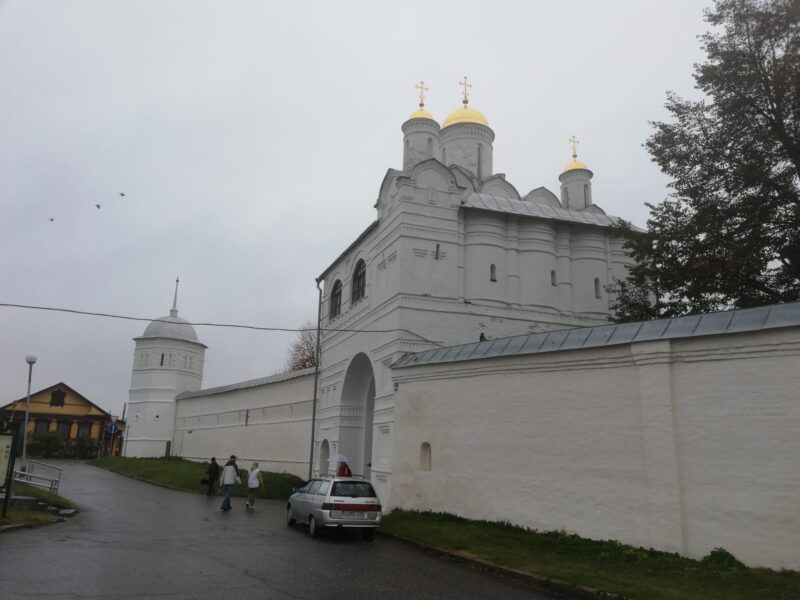
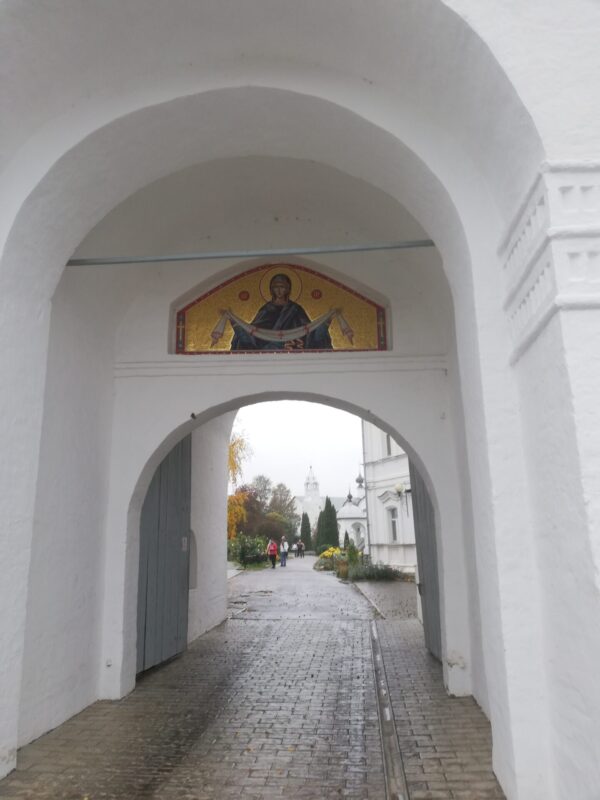
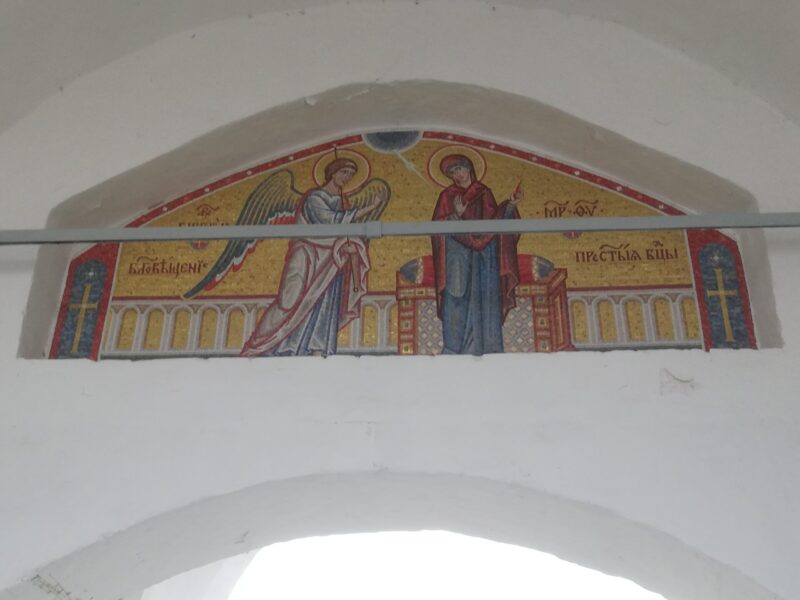
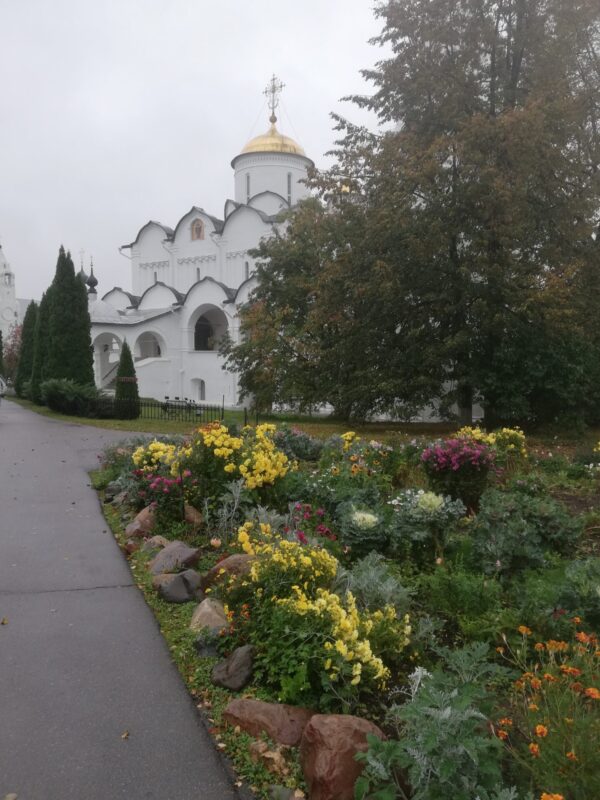
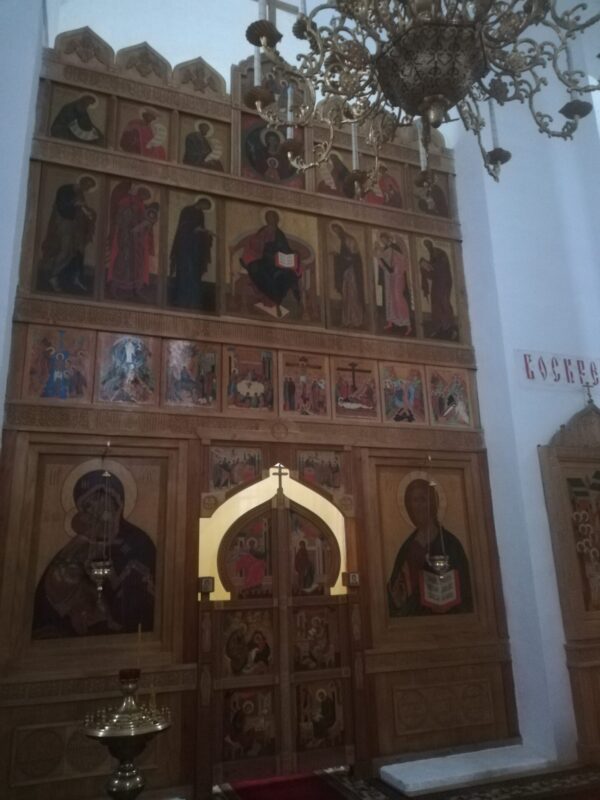
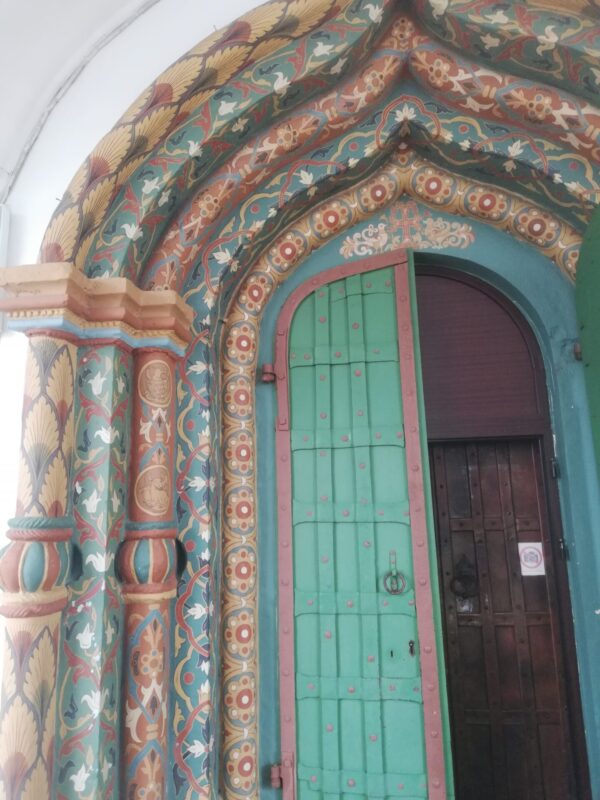
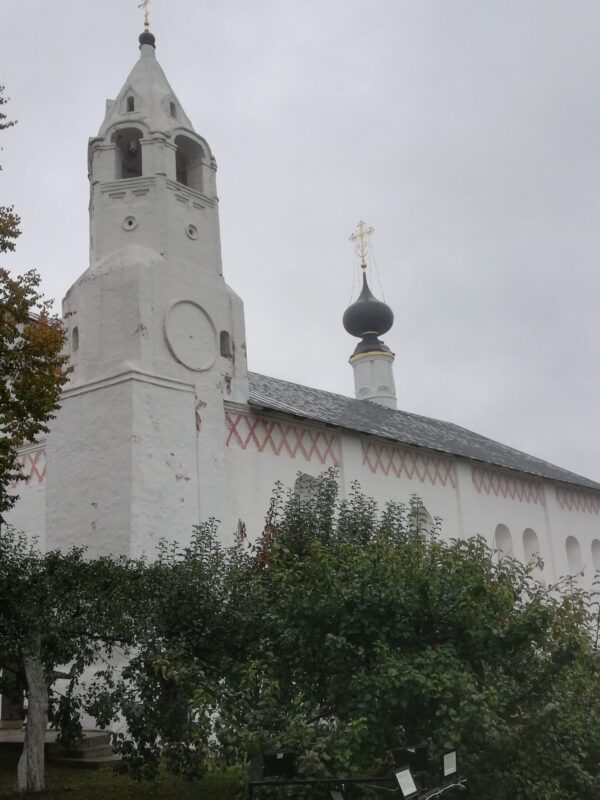
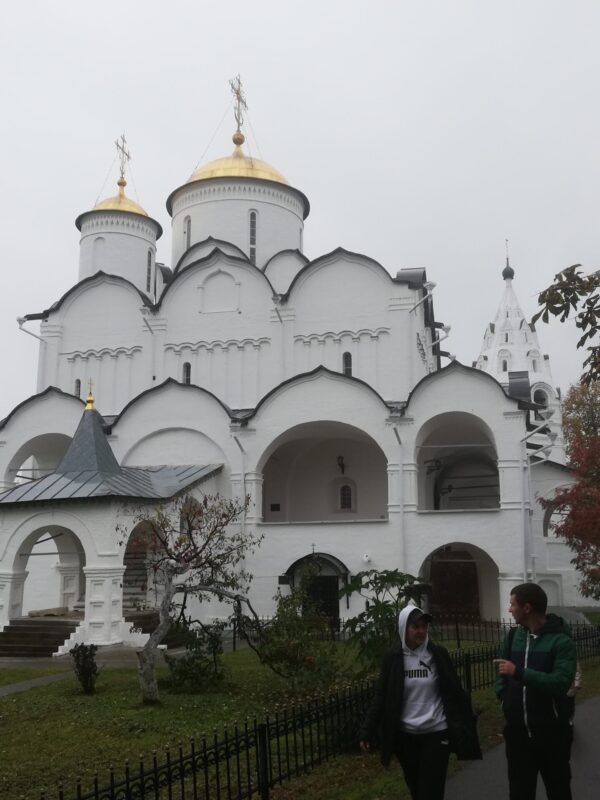

Flowering cabbage in the monastery herb garden
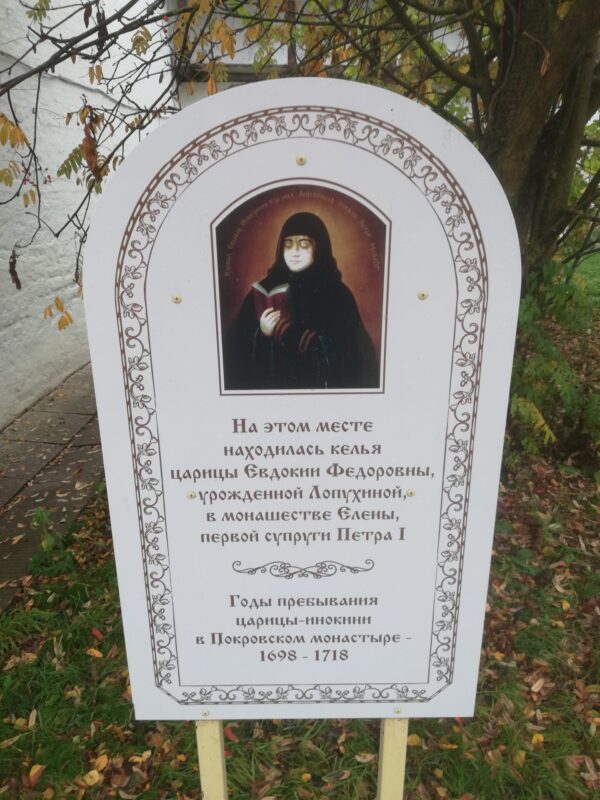
Site of the grave of Peter the Great’s first wife
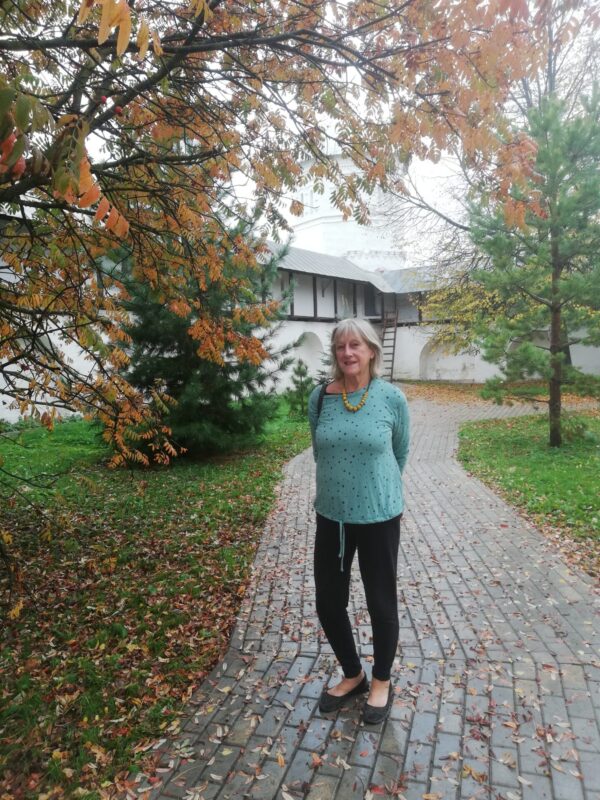
Ancient graveyard